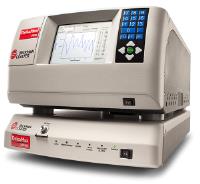 Add My Company
Add My Company
Sign In
The Applications of Dynamic Light Scattering
23/05/2018

Light can typically travel uninterrupted through a homogenous liquid sample, even if it is refracted or if the color of the liquid absorbs some of its wavelengths. This is because transparent liquid particles will transmit light rather than reflecting it. If a liquid sample contains nanoparticles or particulates however, these microscopic solids will block and reflect light across much of the wavelength spectrum, scattering the incident light throughout the sample. This process can be accurately analyzed using dynamic light scattering (DLS) methods. Dynamic light scattering uses incident lasers, sensitive photodetectors, and intuitive software to create speckle patterns of liquid samples or colloids. This methodology has multiple established and emerging applications, supporting the manufacture and supply of numerous everyday products. This article will explore some of the most common applications of dynamic light scattering equipment.
Construction and Soil Analysis The construction sector is subject to an enormous range of compliances and regulations, with stringent specifications for raw material quality. Dynamic light scattering has been used for quality control purposes in the construction industry, to ensure materials meet specific industry standards and perform as expected. It is possible to monitor cement hydration in relation to concrete hardening, for example, and optimize mixing ratios as appropriate. Planners may also use dynamic light scattering to analyze the soil or sediment base of a new construction location, informing the materials and procedures for establishing building foundations. Food, Beverage and Chemical Research Dynamic light scattering is an established particle analysis technique designed to quantify the geometries and concentration of solid particles dispersed within a liquid medium. Researchers can use dynamic light scattering to assess the distribution of fatty particles in milk, for example. Milk is primarily formed from fat globules of just a few micrometers in diameter, with a native membrane formed primarily of protein separating it from its water-based plasma medium. The size, distribution, and Brownian motion of these globules are important values for determining the milk?s potential for coalescence or flocculation ? both processes that can cause milk to separate and spoil. Dynamic light scattering can be used to determine these processes within numerous colloidal samples, to forecast the longevity and mechanical properties of products and establish accurate shelf lives. Pharmaceuticals and Medical Research Particle analyzers equipped for dynamic light scattering have enabled researchers to observe real-time protein aggregation at a molecular level, by studying the hydrodynamic radius of particles in drug solutions. Higher volumes of particles displaying enlarged radiuses may indicate the formation of protein aggregates in pharmaceuticals, which could trigger adverse side effects. The accurate observation of protein aggregation at a nano-metrical level has also supported studies into neurodegenerative diseases. Researchers are now able to use dynamic light scattering to study cellular toxicity at a molecular level. Dynamic Light Scattering with Meritics Meritics is a leading supplier of particle analysis equipment for a limitless range of applications. We source and supply only the most exacting and efficient dynamic light scattering particle analyzers, including the Delsamax series of dedicated particle analyzers, providing accurate acquisiton of particle geometries and distribution in liquid samples. If you would like any more information about performing dynamic light scattering, please do not hesitate to contact us.
For more information on The Applications of Dynamic Light Scattering talk to Meritics Ltd
Enquire Now
More News
List your company on FindTheNeedle.

